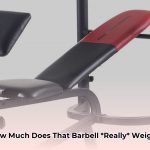Let’s get those legs growing! This guide will teach you how to master the hack squat machine for serious leg strength and prevent injuries. We’ll explore everything from finding the right weight and perfecting your form to creating effective workout plans for any fitness level. For more on weight training, check out this guide on barbell weights. Get ready to level up your leg day!
Hack Squat Machine Weight: Your Comprehensive Guide
Unlock the potential of your leg day with a deep dive into hack squat machine weight. This guide provides a comprehensive overview, ranging from initial weight selection to advanced training methodologies, ensuring the safe and effective development of your quadriceps, glutes, and hamstrings. A thorough understanding of the relationship between weight, proper form, and structured training programs will unlock your potential for leg day success.
Understanding Hack Squat Machine Weight: The Fundamentals
First, it’s essential to understand that every hack squat machine is unique. A primary factor is the machine’s base weight, also known as the unloaded sled weight, which significantly influences the total weight you lift. This base weight can sometimes start at 75 pounds or more, so always determine the machine’s starting resistance before adding any weight plates.
Plate-loaded machines offer versatility, enabling incremental weight adjustments to match your strength curve. Fixed-weight machines, on the other hand, provide simplicity with their pre-set weight increments. The appropriate choice is dependent on your training precision needs and overall progression goals, particularly when striving for smaller weight increments.
Finding Your Starting Weight: A Personalized Approach
Determining your starting weight should be based on your individual fitness level. Beginners should emphasize perfecting form over lifting heavy. Choose a weight that allows you to comfortably perform 8-12 repetitions with proper form. Sharp pain is a signal to stop and reassess.
Experienced lifters can leverage their one-rep max (1RM, the maximum weight you can lift in a single repetition) to calculate their starting weight. A common strategy is to target approximately 65-70% of their 1RM for initial sets.
Regardless of your experience, progressive overload is essential for continued gains. This involves gradually increasing the weight, repetitions, or sets over time. Small, consistent increases can lead to substantial strength and muscle gains over the long term.
Mastering Hack Squat Form: Injury Prevention and Performance Enhancement
Proper form is vital to prevent injury and maximize results:
- Foot Placement: Experiment with different stances to target specific muscles. A wider stance engages the glutes and hamstrings more, while a narrower stance focuses on the quads directly.
- Back Posture: Maintain a straight spine and engage your core throughout the exercise to avoid lower back strain. Avoid rounding your back; a neutral spine is key.
- Range of Motion: Lower yourself as far as comfortably possible while maintaining control and avoiding bouncing at the bottom of the movement. Aim for your thighs to be slightly below parallel to the footplate.
Controlled movements are far more effective than jerky or rushed ones. Prioritize mastering proper form and technique before increasing the weight to avoid common hack squat mistakes and maximize muscle engagement.
Training Programs: A Structured Path to Leg Day Success
The following sample programs are designed for various fitness levels. Adjust them based on your individual progress and how your body responds:
| Experience Level | Sets | Reps | Rest (seconds) | Focus |
|---|---|---|---|---|
| Beginner | 3 | 8-12 | 60-90 | Perfecting technique and muscle engagement |
| Intermediate | 4 | 6-10 | 90-120 | Building strength and muscle growth |
| Advanced | 4-5 | 4-6 | 120-180 | Maximizing strength and hypertrophy |
More experienced lifters can incorporate advanced techniques such as drop sets or pyramid training to further challenge their muscles. Consistent application of these techniques, combined with a gradual increase in weight, yields consistent muscle and strength gains.
Muscle Activation: Fine-Tuning for Targeted Results
Different foot placements activate different muscle groups. A narrower stance emphasizes the quadriceps, while a wider stance recruits the glutes and hamstrings to a greater degree. Experiment with angled foot placements to fine-tune your workout and optimize muscle engagement. It’s essential to find the stances that work best for your body and training goals.
Safety First: Injury Prevention Strategies
Always warm up your muscles thoroughly before leg day to reduce the risk of injury. Use a spotter, especially when lifting heavier weights, to ensure safety and provide assistance if needed. Pay close attention to your body; stop if you feel any pain or discomfort. If you have pre-existing medical conditions, consult a physician or physical therapist before starting a new exercise program. Prioritize safety above all else by understanding proper form and respecting your physical limitations.
Choosing Your Hack Squat Machine: Key Considerations
When selecting a hack squat machine, consider the following factors:
- Weight Capacity: Ensure the machine can accommodate your current strength level and future strength goals.
- Build Quality: A durable, well-made machine enhances safety, stability, and longevity. Look for sturdy construction and high-quality materials.
- Adjustability: Adjustable footplates, shoulder pads, and safety features increase comfort, versatility, and training variations.
A well-informed choice ensures a better and safer training experience, maximizing your ability to perform exercises safely and effectively.
Final Thoughts: The Path to Hack Squat Mastery
Mastering the hack squat machine is a journey, not a sprint. Commit to consistent practice, prioritize proper technique, implement progressive overload, and listen to your body’s signals. With dedication and attention to detail, you can achieve your fitness goals and build a powerful, muscular physique.
How to Choose the Right Hack Squat Machine Based on Bodyweight and Fitness Level
Key Takeaways:
- Hack squat machines vary significantly in weight capacities and features.
- Your bodyweight and fitness level directly affect which machine best suits your needs.
- Plate-loaded machines offer scalability, whereas fixed-weight machines provide simplicity.
Understanding Hack Squat Machine Weight Specifications
The base weight of a hack squat machine directly impacts the total weight you’ll be lifting. Plate-loaded machines provide flexibility in adjusting the weight, while fixed-weight machines offer simplicity and ease of use. Choose a machine that matches your current strength and experience level.
Determining Your Optimal Starting Weight
Aim for a weight that allows you to comfortably perform 8-12 repetitions with proper form. If you’re an experienced lifter, you can estimate your one-rep max (1RM) to help determine an appropriate starting weight. Implement progressive overload to gradually increase the weight or reps over time.
Proper Form and Technique: Mastering the Hack Squat Exercise
Begin by adjusting the footplates for comfort, typically setting them at shoulder-width apart. Maintain a neutral spinal alignment, engage your core muscles, and lower your body under control until your thighs are slightly below parallel to the footplate. Push back up with power, focusing on your quadriceps and glutes.
Step-by-Step Guide to Proper Form:
- Adjust the Footplates: Before beginning, adjust the footplates to your desired width and angle for comfort and targeted muscle activation.
- Position Yourself: Rest your back firmly against the back pad and position your shoulders comfortably against the shoulder pads.
- Initiate the Movement: With control, bend your knees to lower your body.
- Maintain Spinal Alignment: Actively keep your back straight throughout the exercise to avoid rounding.
- Reach Full Range of Motion: Lower yourself until your thighs are approximately parallel to the footplate.
- Extend: Push through your heels and extend your legs to return to the starting position.
- Repeat: Repeat the movement for the desired number of repetitions while maintaining proper form.
Training Programs and Repetition Schemes
Here are sample training programs tailored to different experience levels:
| Experience Level | Sets | Reps | Rest (seconds) |
|---|---|---|---|
| Beginner | 3 | 8-12 | 60-90 |
| Intermediate | 4 | 6-10 | 90-120 |
| Advanced | 5 | 4-6 | 120-180 |
More advanced lifters can incorporate advanced techniques like drop sets and pyramid training into their routines. Remember to adjust the program based on your individual experience level and fitness goals.
Muscle Activation & Foot Placement: Targeting Specific Muscle Groups
A narrower stance emphasizes activation of the quadriceps muscles, while a wider stance recruits more of the glutes and hamstring muscles. Experiment with different foot placements to determine what works best for your body and training goals.
Safety Precautions and Contraindications
Before starting any new exercise program, consult with a physician to ensure it is appropriate for your individual health status. Always warm up thoroughly before beginning your workout. Use a spotter, especially when lifting heavier weights, to ensure safety and provide assistance if needed. Pay attention to your body and avoid exceeding your physical limits.
Choosing the Right Hack Squat Machine: Essential Features to Consider
Plate-loaded vs. Fixed-weight: Plate-loaded systems offer more precise weight adjustments to match your strength curve.
Weight capacity: Select a machine with a weight capacity
- Unlock Young Doctors’ Work-Life Balance: Actionable Strategies Now - December 2, 2025
- Unlock Life Harmony: Work-Life Integration Guide - November 30, 2025
- Unlock Work-Life Harmony:Your Guide to Integration - November 27, 2025
















